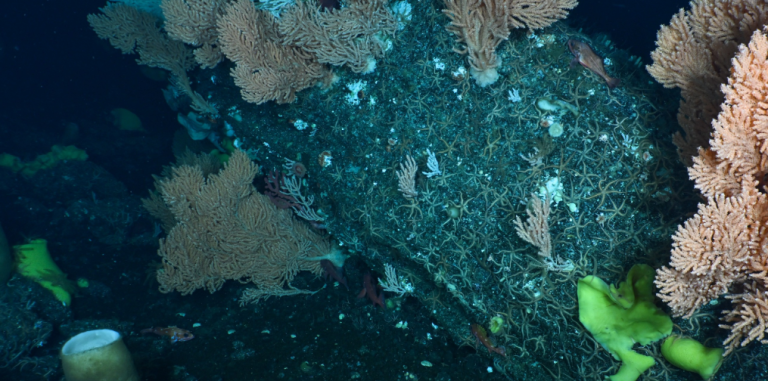Scientists have explored the depths of the Nazca Ridge, an underwater mountain chain 900 miles off the coast of Chile, uncovering a massive seamount teeming with life and at least 20 never-before-seen species. This seamount rises over 1.9 miles from the ocean floor—about a third as tall as Mount Everest—and is part of an international effort to explore Earth’s largely uncharted oceans, with 95% of them still a mystery.
Using underwater robots, researchers from the Schmidt Ocean Institute mapped the seamount and filmed some of the extraordinary life forms inhabiting this unique ecosystem. Among the discoveries were a pristine coral garden spanning 800 square meters, which provides shelter to various marine species such as rockfish, brittle stars, and king crabs.
Arctic expedition uncovers deep-sea microbes that may harbor the next generation of antibiotics https://t.co/QXbchLZOXr
— Live Science (@LiveScience) August 30, 2024
The expedition also captured the first-ever footage of a live Promachoteuthis squid, a species so rare that only a few specimens have ever been described, dating back to the late 1800s. Other remarkable creatures documented include a Casper octopus and two rare deep-sea organisms nicknamed “flying spaghetti monsters.”
This exploration marks the third Schmidt Ocean Institute expedition in the region this year, with previous missions documenting over 150 new species. Prior to these expeditions, the area was known to host 1,019 species. Now, the number exceeds 1,300, and it continues to grow as scientists uncover more of the seafloor’s secrets.
Dr. Jyotika Virmani, Co-Chief Scientist and Executive Director of the Schmidt Ocean Institute, expressed excitement about the discovery of the new seamount and its vibrant ecosystem, comparing its height to almost four times that of the Burj Khalifa, the world’s tallest building. She noted that only 26% of the seafloor has been mapped to such a high resolution, and each expedition brings more of the unknown into focus.
This week the NorthEast Pacific Deep-sea Exploration Project Expedition team visited the SG̲áan K̲ínghlas-Bowie Seamount Marine Protected Area. It is believed that this seamount was an active volcanic island about 18,000 years ago during the last Ice Age.
📸: 2024 NEPDEP pic.twitter.com/rxfFoI3ZKt
— Fisheries and Oceans (@FishOceansCAN) August 30, 2024
These findings not only highlight the remarkable biodiversity of the Southeastern Pacific seamounts but also underscore the gaps in our understanding of these interconnected ecosystems. The data collected during these expeditions could help shape future policies aimed at safeguarding these pristine environments for future generations.
Key Points:
i. Scientists discovered a massive underwater mountain in the Nazca Ridge, measuring over 1.9 miles tall and home to at least 20 new species.
ii. The Schmidt Ocean Institute’s expedition documented the first live footage of the rare Promachoteuthis squid and other unique creatures.
iii. A pristine coral garden was found on the seamount, providing habitat for various marine life, including rockfish and king crabs.
iv. This is the third expedition in the region this year, increasing the known species count from 1,019 to over 1,300.
v. The research highlights the vast unexplored biodiversity of Earth’s oceans and could inform future conservation efforts.
Lap Fu Ip – Reprinted with permission of Whatfinger News

